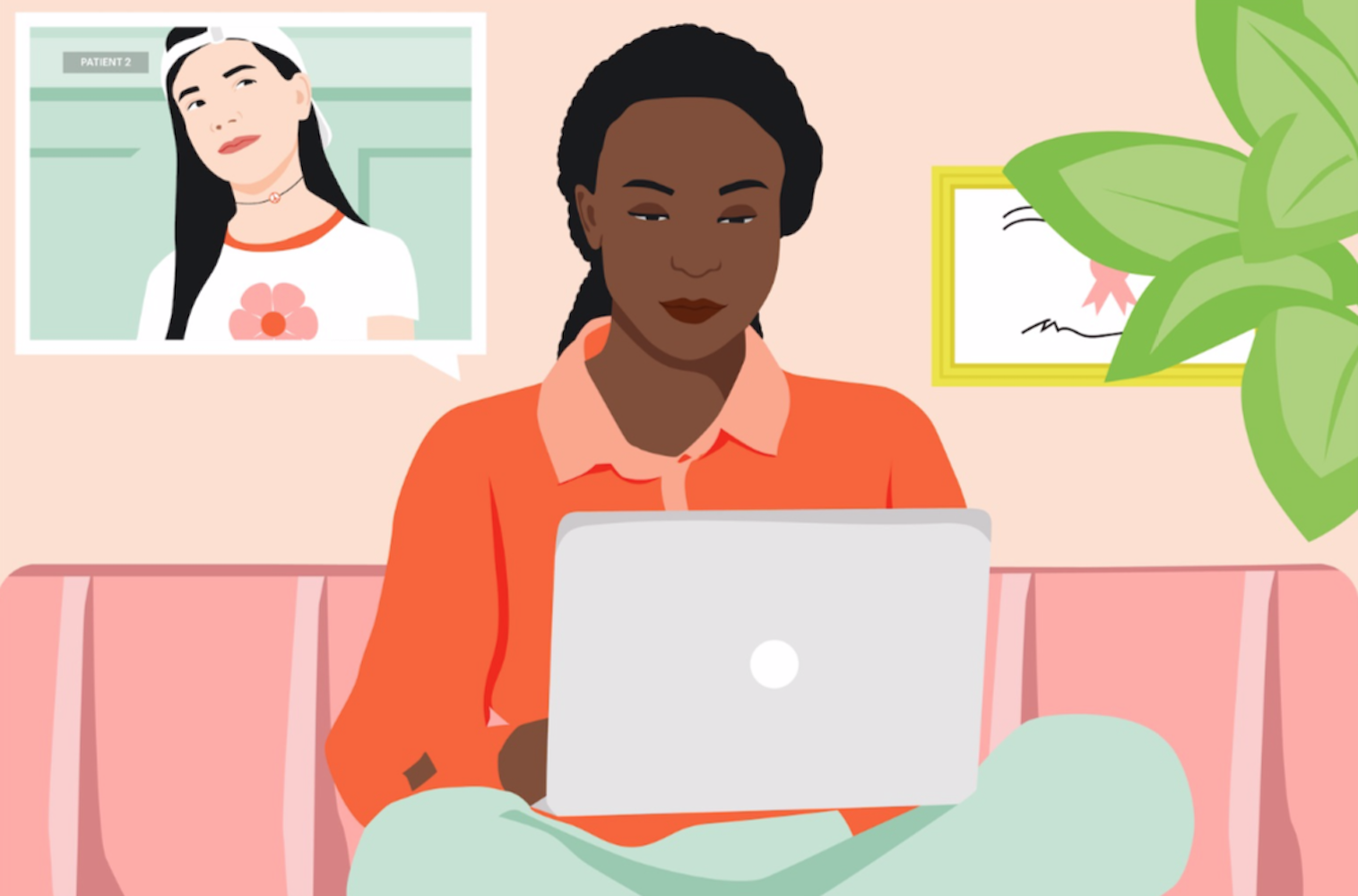
As we all worry about the effects that the COVID-19 pandemic has on our children, physical health may be the dominant concern, but with statistics suggesting that mental health needs are rising exponentially in children, mental health is an important part of the conversation, too.
As a child psychologist doing telehealth therapy with children and teens, I can attest that our kids need support now more than ever. Most insurance companies have risen to the challenge, covering telehealth for behavioral medicine for the first time ever, some even waiving co-pays (at least for now). These actions have increased access to mental health care as we wait for the time that going back into an office to see a therapist is commonplace again.
It's no surprise, however, that video therapy just isn't the same as in-person therapy, especially when it comes to doing it with children. And while research and anecdotal evidence may support telehealth with children as a valuable way to receive mental health treatment, as someone who now has dozens of hours under her belt (it feels like thousands), I have learned a few things over these months. If your child does therapy over video or if you are considering starting therapy for your child, here's what you should know.
Teletherapy Still (Likely) Works
Online therapy with children may be a whole new world, but it's one that we can all make work since the last thing our children need right now is to lose support. Evidence to date shows that telehealth therapy with adults is just as effective in person as it is over video in terms of both how satisfied people are and in terms of outcomes. In fact, one big advantage to telehealth is fewer people drop out, likely due to the convenience factor. There's not as much research for children and teens yet, but studies look promising so far.
The children and teens who have switched from seeing me in my office to seeing me through a device have wanted to keep meeting, and we have continued to work on treatment goals regardless of therapy location. The younger the child, though, the more I have had to adapt how we do therapy. This could include more involvement with a parent or a shorter session due to limited attention spans and fidgety bodies.
Perhaps the biggest challenge has been integrating the necessary role of play. Children process stress and express emotions through play and often more easily discuss difficult topics if a discussion happens during a game. Translating board games and art projects from the office to video means more limited options. So, if you walk past your child during a session and see another game of Uno on the screen, trust that it's part of the process.
Session Timing Matters
For younger children and those with extra energy in general, I have witnessed how going straight from school Zoom to therapy Zoom can be a set-up for very low motivation to do therapy (I don't blame them!). Sometimes the schedule may make this unavoidable, but even encouraging a few minutes of intense physical activity in between Zoom demands can help ("how many jumping jacks can you do in 30 seconds?").
Headphones Help Block Out Background Noise
Background noises can sound very front and center as I try to tune out parents managing chaotic households (reminding me of myself at home!). A child wearing headphones can help both of us tune out the extra, and stay focused on therapy instead of a sibling wrestling match.
Ensure Privacy as Much as Possible
I often ask, "Can anyone else hear you right now?" because another family member being in the room can be distracting at best and censoring at worst. Even if there's no way to prevent a stray sibling from hanging out for a few minutes while we are in session, it does affect what questions I ask and where I steer the conversation. The more privacy you can set up for your child, the better work we can do.
Emily Edlynn, Ph.D., is the author of The Art and Science of Mom parenting blog and a mother of three from Oak Park, Illinois. She is a clinical psychologist in private practice who specializes in working with children and adolescents.
